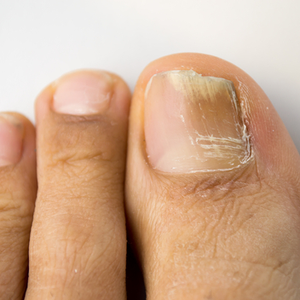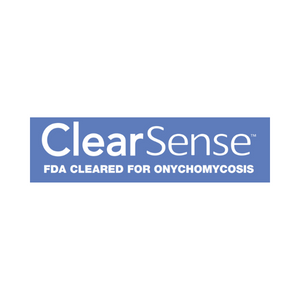
Fungal infections of the nails occur most often on toenails due to ill-fitting shoes and the warm, moist environment of closed footwear. These infections can cause nails to turn white or yellow, thicken, crumble or separate from the nail bed. The infection may be isolated to a single nail, or it may affect all nails. Infected nails may be uncomfortable or painful when wearing shoes, and may even cause serious physical and occupational limitations.
Treatment of Toe & Nail Fungus
Your Trillium Creek Dermatology skin experts will carefully examine all of your nails to determine the extent of your infection and then recommend a proper course of treatment.
Other skin/nail conditions can look like fungal infections. Our staff will test the nail to confirm the presence of fungus. You may be prescribed an oral anti-fungal and/or a topical treatment for any bacterial or fungal infection present on the foot. These treatments will help you to prevent any recurrences of the fungal nail infection and remove any excess fungus from the skin.
Fungal infections can be persistent and recurrent. Some treatment options for fungal infections may be undesirable or contraindicated for your health. Our skin experts will advise you on the laser treatment, which is painless and requires two treatments.
Laser Treatments Available for Toe & Nail Fungus

Aerolase®
AeroLase is a laser technology which can be used to treat nail fungus. Treatment typically requires just three sessions to clear fungus and resolve symptoms like discoloration, thickening, or separation of the nails.
Learn More
ClearSense™
ClearSense from Sciton uses laser energy to heat the nail and nail bed, decreasing fungal infection while improving the growth of healthy nails. The treatment is comfortable and requires no downtime.
Learn More

